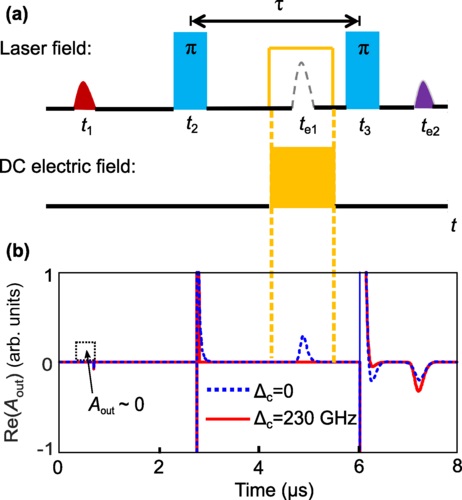
近日,北京理工大学的陈宇辉&张向东课题组取得一项新进展。经过不懈努力,他们团队在研究中取得进展。他们提出了电光效应控制的集成光量子存储器。相关研究成果已于2023年7月18日在国际知名学术期刊《物理评论A》上发表。
该研究团队提出了一种独特的方法,以满足芯片封装型(on-chip)量子存储器的要求,而不是寻找特定材料来满足所有需求。研究人员将相干存储和可控存储的功能分配给稀土离子和铌酸锂晶体。具体而言,他们利用铌酸锂的电光效应,将光学量子态存储在掺铒铌酸锂微腔中。通过外加电场,他们能够改变微腔的频率,进而调节与原子集体激发的共振条件。这种方法还可以用于抑制或增强光子回波的发射。计算结果表明,该方法能够实现高效率和低噪声的性能。
据悉,集成光量子存储器是一种可扩展的解决方案,用于同步大量量子节点。它被认为是实现分布式量子计算和量子传感器网络等引人注目的量子应用的关键。紧凑的量子存储器是实现这些应用的必要条件。
附:英文原文
Title: Integrated optical quantum memory controlled by the electro-optic effect
Author: Xia-Xia Li, Pai Zhou, Yu-Hui Chen, Xiangdong Zhang
Issue&Volume: 2023/07/18
Abstract: Integrated optical quantum memories are a scalable solution to synchronize a large number of quantum nodes. Without compact quantum memories, some astonishing quantum applications such as distributed quantum computing and quantum sensor networks would not be possible. Rather than find a specific material that meets all the requirements of an on-chip quantum memory as other protocols usually do, we propose to assign the memory requirements on coherent storage and controllability to rare-earth ions and a lithium niobate crystal, respectively. Specifically, optical quantum states are stored in an erbium-doped lithium niobate microcavity by utilizing the electro-optic effect of lithium niobate. The cavity frequency can be shifted by an external electric field, thus modifying the resonance condition between the cavity and the collective atomic excitation. This effect is further used to suppress or enhance the emission of photon echoes. Our calculated results show that high efficiency and a low noise performance are achievable.
DOI: 10.1103/PhysRevA.108.012614
Source: https://journals.aps.org/pra/abstract/10.1103/PhysRevA.108.012614
Physical Review A:《物理评论A》,创刊于1970年。隶属于美国物理学会,最新IF:2.97
官方网址:https://journals.aps.org/pra/
投稿链接:https://authors.aps.org/Submissions/login/new
